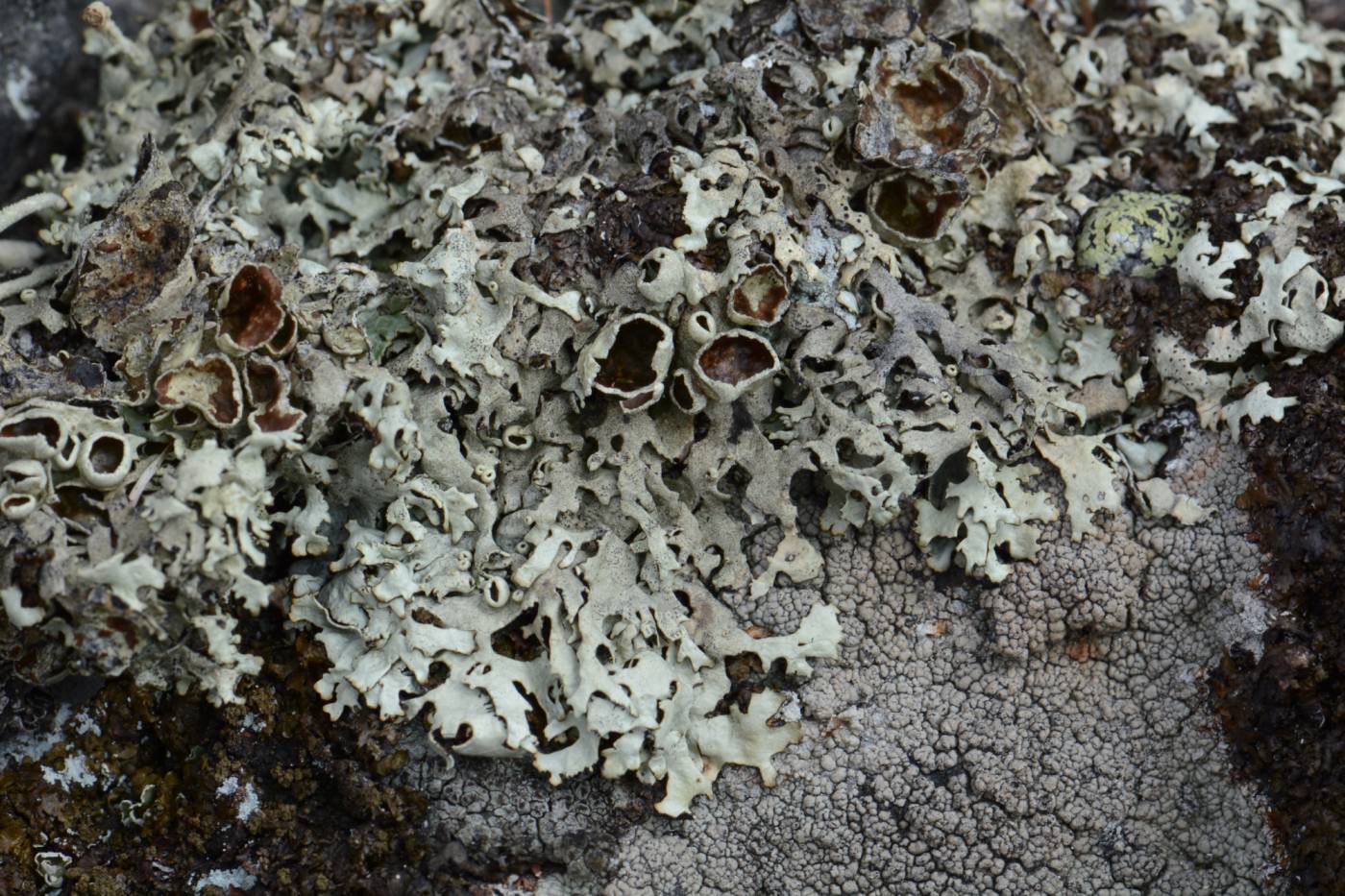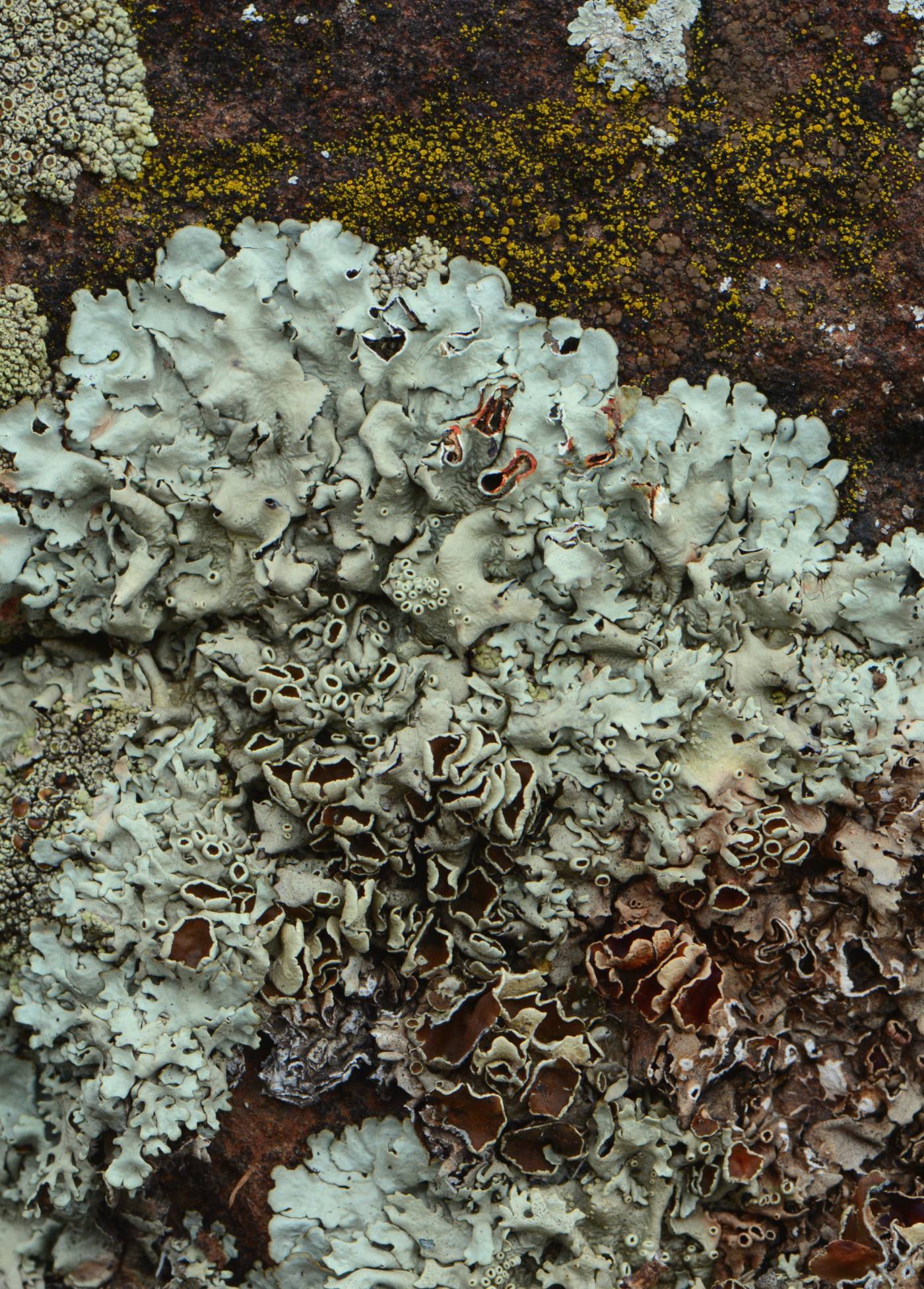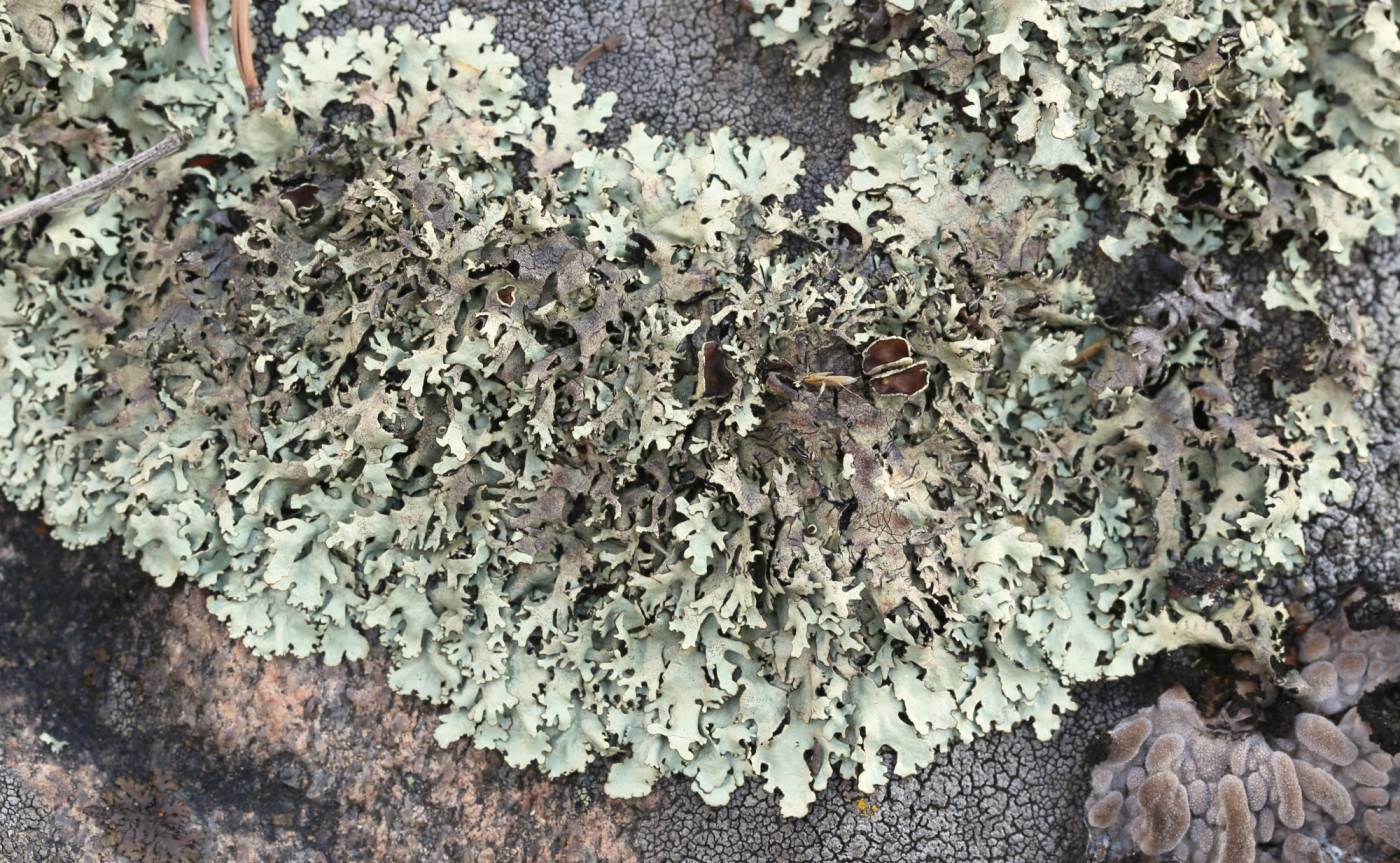The most common non-isidiate yellow-green Xanthoparmelia in the Czech Republic. It is distinguished from similar species by the combination of the brown lobe underside and the presence of salazinic acid in the medulla (K+ red). At suitable sites, it is abundant all over the Czech Republic. It can be found on sun-exposed siliceous and extrusive rocks, both acidic and basic, from the lowlands to the mountains, with the centre of distribution at lower and middle elevations. Locally, it colonizes soil too. In Europe and whole western Eurasia, it is widely distributed.
A similar, little known terricolous X. pulvinaris was recorded in the Czech area in the past. It is mainly known from Hungary, where it is still being distinguished. From X. stenophylla, it differs in ecology and habitat; it most commonly grows on calcareous or sandy grasslands and bare calcareous soil (Farkas et al. 2015).
Literature: Farkas E., Kursinszki L., Szőke É. & Molnár K. (2015): New chemotypes of the lichens Xanthoparmelia pulvinaris and X. subdiffluens (Parmeliaceae, Ascomycota). – Herzogia 28: 679 – 689.
taxonomic classification:Ascomycota → Lecanoromycetes → Lecanorales → Parmeliaceae → Xanthoparmelia
most frequented synonyms:Parmelia somloensis, Xanthoparmelia somloënsisRed List (Liška & Palice 2010):LC – least concern
Occurrence in the Czech Republic
All records: 468, confirmed 152. One click on a selected square displays particular record(s), including their source(s).



